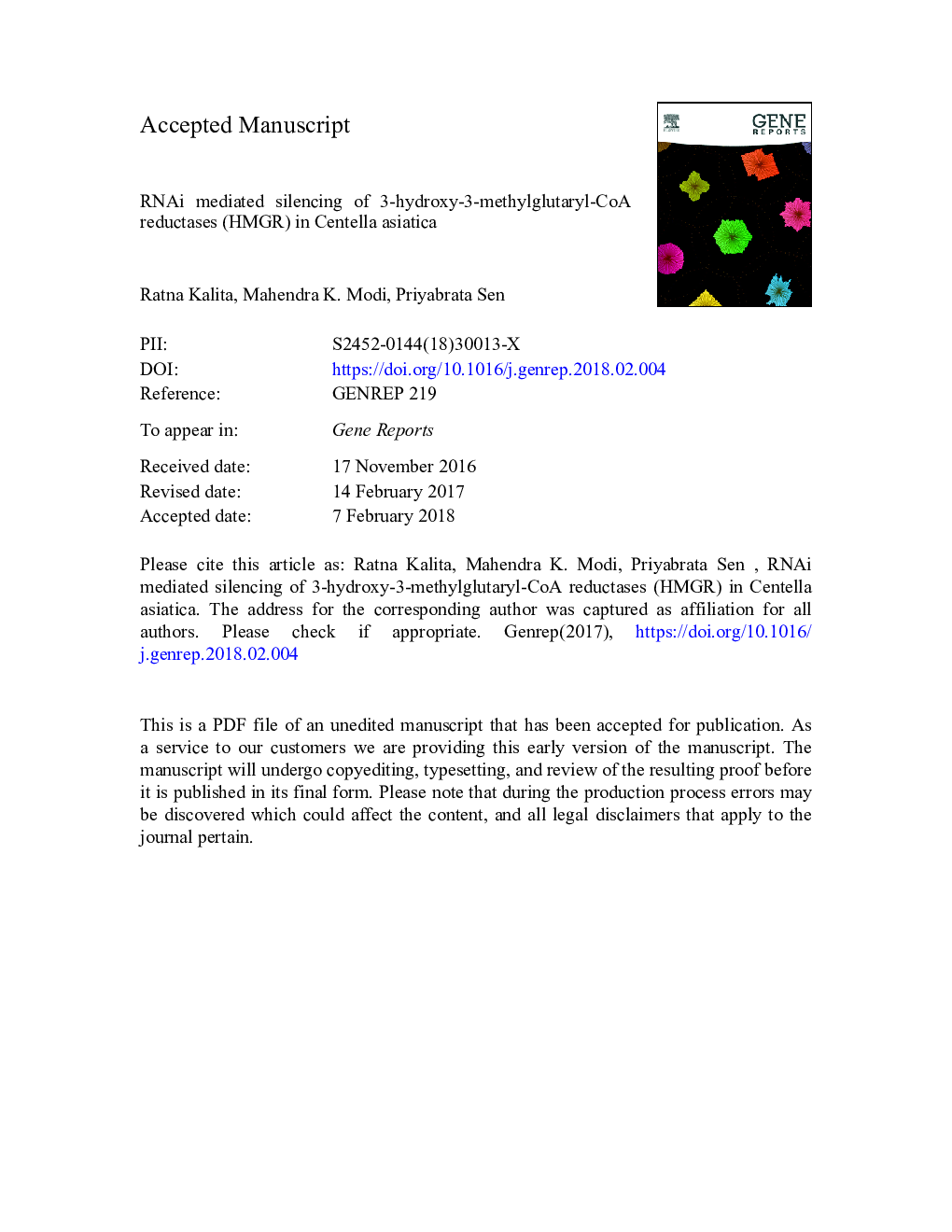| Article ID | Journal | Published Year | Pages | File Type |
|---|---|---|---|---|
| 8646208 | Gene Reports | 2018 | 24 Pages |
Abstract
Centella asiatica is an important medicinal plant and synthesizes the triterpenoid saponins via the isoprenoid pathway. The metabolic engineering approach is a promising tool to improve the key component which is limiting in many of the medicinal plants but, prior knowledge of the pathway leading to accumulation of the secondary metabolite is prerequisite before any molecular intervention. The present study aimed to knock-down 3-hydroxy-3-methylglutaryl-CoA reductases (HMGR), a key regulatory enzyme in the mevalonic (MVA) pathway using RNAi approach. Long term goal of this project is to delineate the biochemical pathway responsible for synthesis of key active ingredient in Centella. 3-Hydroxy-3-methylglutaryl-CoA reductases (HMGR) play an important role in catalyzing the first committed step of isoprenoid biosynthesis in the mevalonate (MVA) pathway in plants. The RNAi-HMGR construct was designed using the pHANNIBAL vector and subsequently cloned into a binary vector pART27. The transient analysis of the RNAi-CaHMGR using semi quantitative RT-PCR confirmed the silencing of the endogenous HMGR gene in Centella asiatica. Thus, the designing of the RNAi-HMGR construct and transient expression analysis of the construct gene is the first step to elucidate triterpenoid biosynthesis pathway that shall pave the way to intervene following metabolic engineering approach in future.
Keywords
Related Topics
Life Sciences
Biochemistry, Genetics and Molecular Biology
Genetics
Authors
Ratna Kalita, Mahendra K. Modi, Priyabrata Sen,
